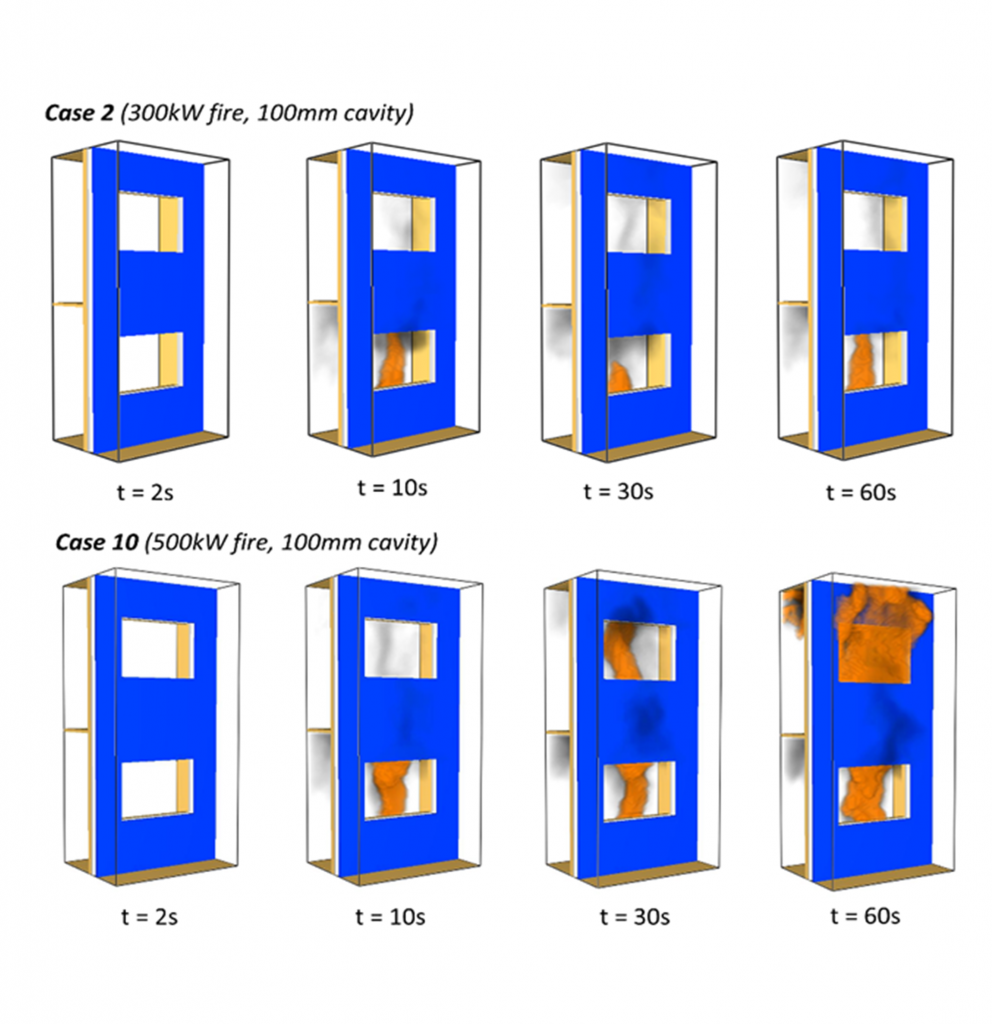Prediction of the fire propagation process in open and confined spaces requires multi-scale computational models that capture the flammability properties, thermal degradation, and combustion characteristics of advanced lightweight materials and structures. This project aims to integrate solid pyrolysis models characterising the complex thermal degradation process with a high-fidelity computational fluid dynamics framework based on direct numerical simulation (DNS). This high-fidelity DNS of turbulent flames with detailed descriptions of chemistry will provide data to validate combustion models in engineering-level simulations. For problems that involve the burning of flame retardant structures especially for fire prevention assessments, high-level data obtained through DNS make it possible to extend existing fire models such as those based on large eddy simulation (LES) or Reynolds-Averaged Navier-Stokes (RANS) approaches.
Research Topics
1. Computational Material Synthesis
2. Fire and Solid Pyrolysis Coupled Modelling
3. Numerical Characterisation of Flamming Behaviour of Fire Whirl

Publications
Investigation of door width towards flame tilting behaviours and combustion species in compartment fire scenarios using large eddy simulation
2020/04/01
Published in: International Journal of Heat and Mass Transfer
Authors: Q. Chen, T.B.Y. Chen, A.C.Y. Yuen*, C. Wang, Q.N. Chan, G.H. Yeoh
Numerical assessment on a large-scale compartment buoyant fires was performed to investigate the effect of exit door width on the flame tilting behaviour, evolution of the thermal layer and formation of combustion species.



